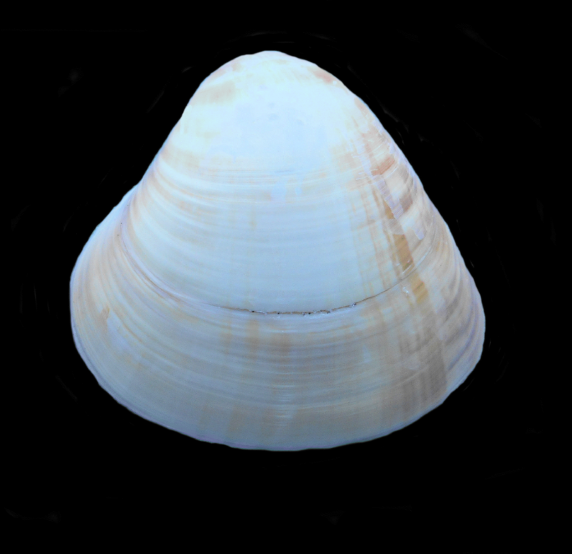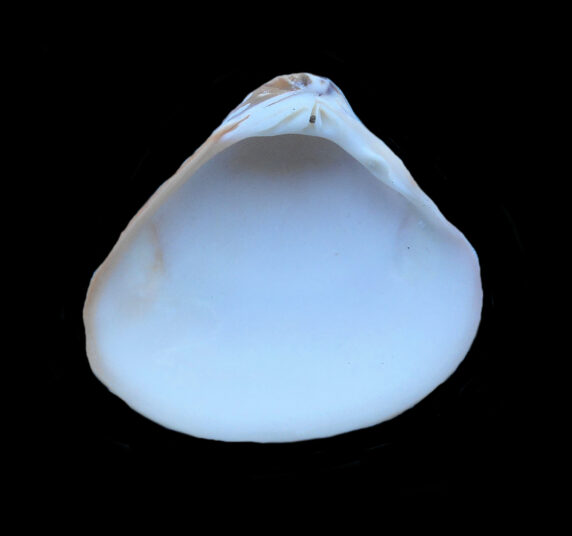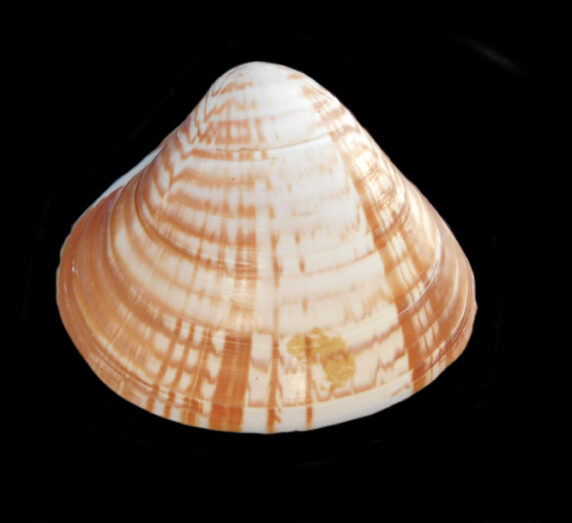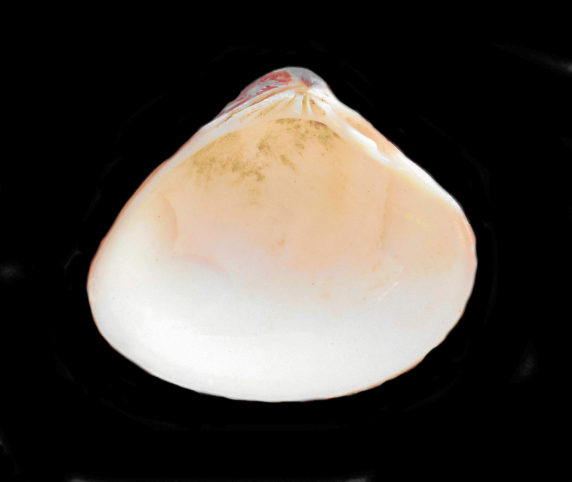Byron Venus Clam Shell, Tivela byronensis

 Byron Venus Clam, Tivela byronensis. Shell collected from within the estuary of the Magdalena Bay complex, Baja California Sur, October 2018. Size: 4.4 cm (1.7 inches) x 4.1 cm (1.6 inches). Collection, photograph and identification courtesy of Bob Hillis, Ivins, Utah.
Byron Venus Clam, Tivela byronensis. Shell collected from within the estuary of the Magdalena Bay complex, Baja California Sur, October 2018. Size: 4.4 cm (1.7 inches) x 4.1 cm (1.6 inches). Collection, photograph and identification courtesy of Bob Hillis, Ivins, Utah.

 Byron Venus Clam, Tivela byronensis. Shell collected from within the estuary of the Magdalena Bay complex, Baja California Sur, October 2018. Size: 4.4 cm (1.7 inches) x 3.9 cm (1.5 inches). Identification courtesy of Bob Hillis, Ivins, Utah.
Byron Venus Clam, Tivela byronensis. Shell collected from within the estuary of the Magdalena Bay complex, Baja California Sur, October 2018. Size: 4.4 cm (1.7 inches) x 3.9 cm (1.5 inches). Identification courtesy of Bob Hillis, Ivins, Utah.
The Byron Venus Clam, Tivela byronensis (Gray, 1838), is bivalve mollusk of the Veneridae Family of Venus Clams. They are also known in Mexico as tivela de Byronare. The shell is a strong, inflated, sturdily-built shell that have a rounded triangle profile with a prominent beak. The exterior of the shell is sculpted with very fine concentric lines. The exterior is white to cream in color and may be marked by light, dark, or reddish- brown bands, chevrons, or spots; the interior is off-white, often with a purple wash. Some specimens have a blue or purple spot on the beak. They are covered with a light-brown thin, velvety periostracum. Byron Venus shells reach a maximum of 6.3 cm (2.5 inches) in length and 5.9 cm (2.3 inches) in height.
Byron Venus Clams reside in sand substrate, intertidally, and depths of 73 m (240 feet). The majority of shells are collected a beach wash-ups. They range from Scammon’s Lagoon, Baja California to Peru and they are found throughout the Sea of Cortez.
Synonyms include Cytherea gracilior, Cytherea hindsii, Cytherea pulla, Cytherea radiate, Cytherea semifulva, Tivela elegans, Trigona byronensis, Venus arguta, and Venus solangensis.